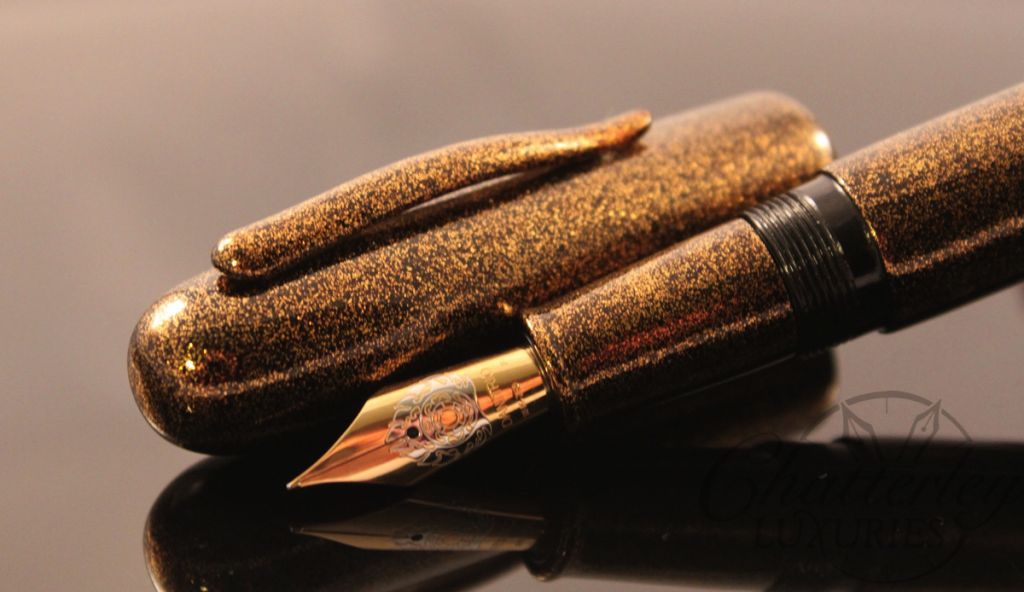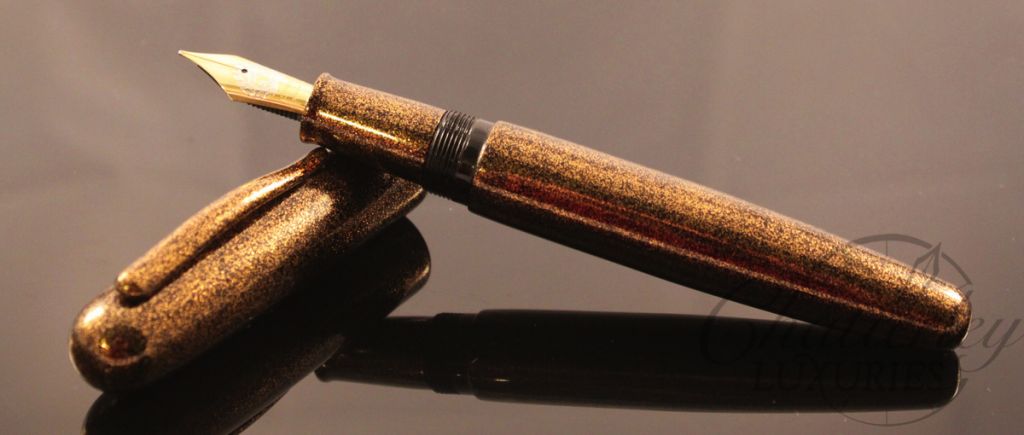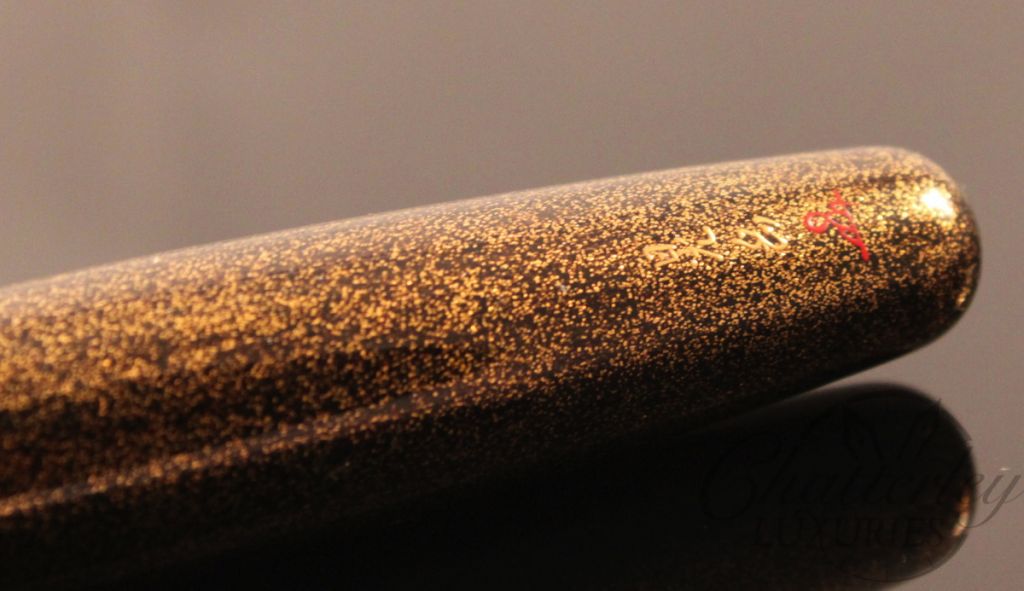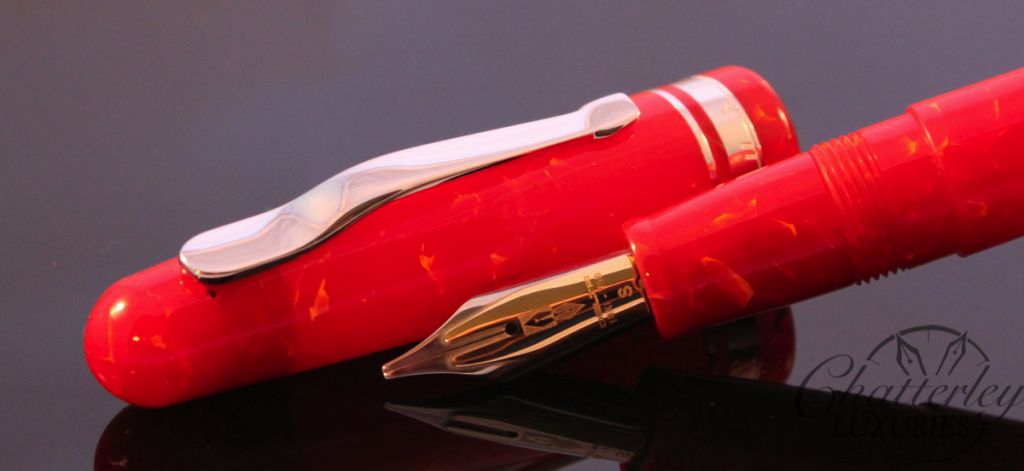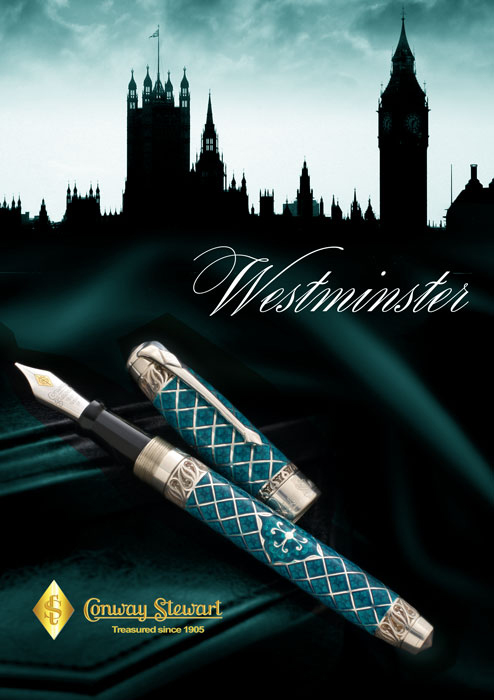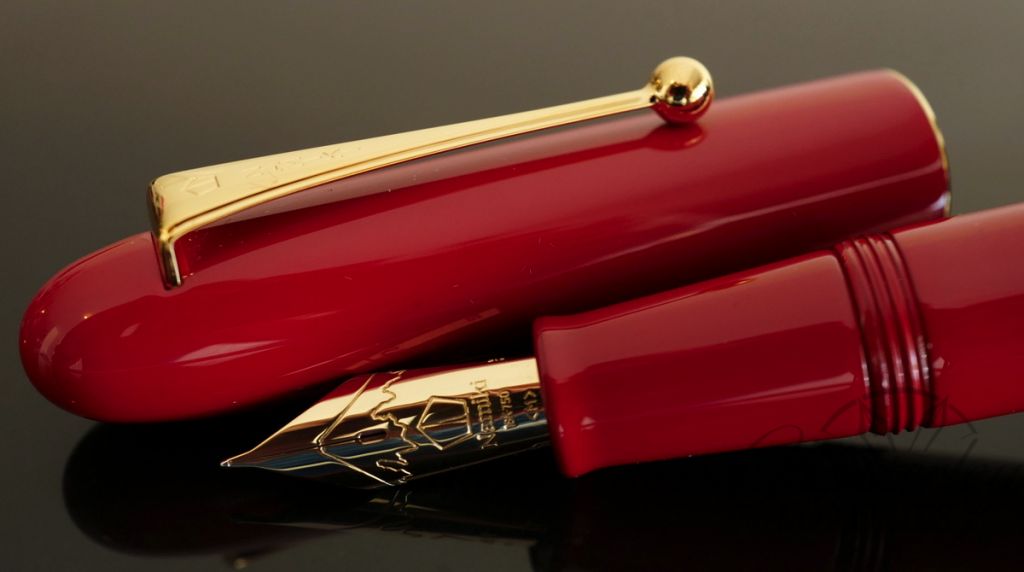Danitrio makes beautiful pens using the Japanese skill and craftsmanship that has been mastered over the last few thousand of years. Takumi is one of the styles of pens that Danitrio has created, it is fitted with a size #6 18kt gold nib and employs a cartridge convertor filling system. The pen itself is black and is sprinkled with gold powder and painted. The technique is detailed below. The clip has also been treated in the same manor, truly remarkable.
Craftsmen call Urushi a living thing. Its qualities differ even from the same trees, but the quality is different from the trunk or branches. Different qualities from different trees or different areas or countries. Then, crude Urushi must be refined to make more than 10 different qualities of Urushi for different usage. Now craftsmen have to pay more than $600.00 per pound for genuine Japanese Urushi, $250.00 for Urushi imported from China. They use it on different occasions and different places, while manmade Urushi or plastic paint only cost a few dollars a pound. Genuine Urushi is like pure gold, only for fine jewelry. and pure gold is too expensive for cheap works with cheap materials.

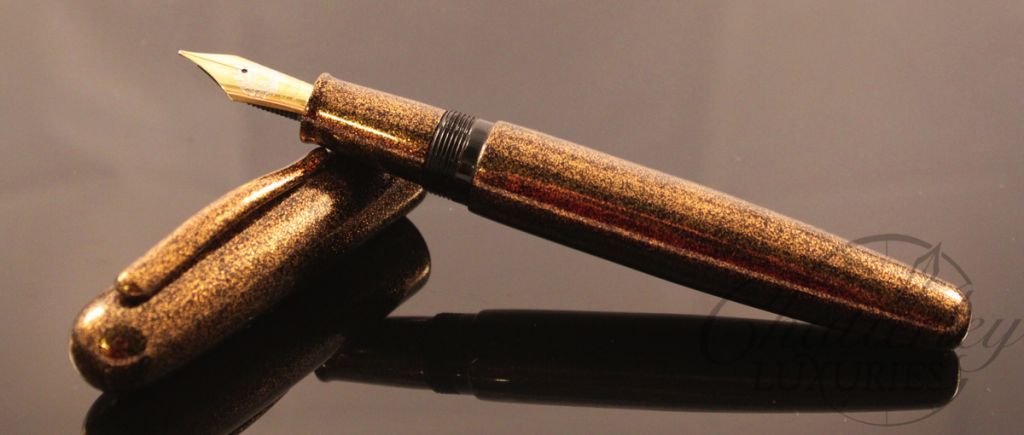
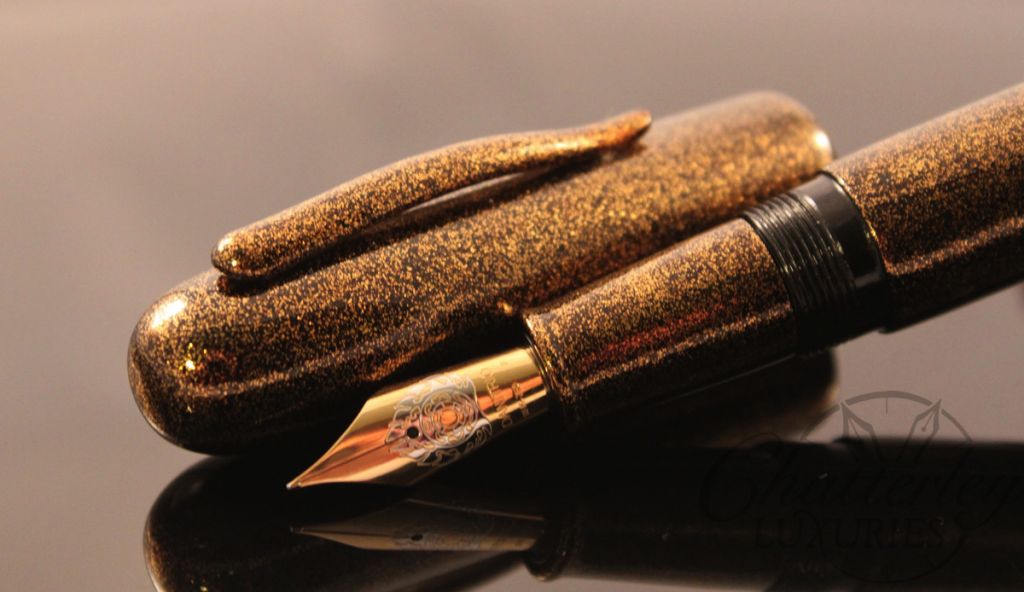
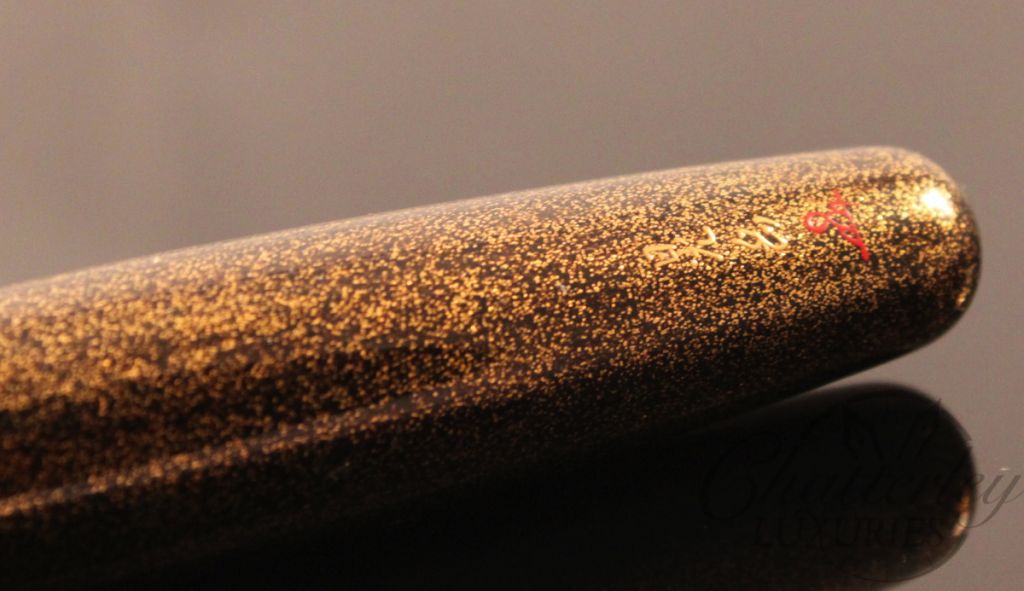
Nashiji-nuri Variation: Nashiji-nuri uses fine size gold powders to sprinkle on the base that is already painted with Urushi in black or other colors and burnished. And the surface is covered with clear Urushi and it is burnished until the coating is just thick enough to keep the powders underneath and shiny. The look is like the skin of pear (Nashi) and that’s why they call it Nashiji-nuri. The craftsmen always like to do something new and different. So they use flattened gold powders called Hirame which is larger then Nashiji powders to sprinkle on the surface as Nashiji does, but the coatings will be burnished until the Hirame shows up from the beneath. The Hirame will look even shinier than Nashiji and since the powders are larger than Nashiji, the effect is more visible.
The base for Urushi paintings must be smooth and strong in order to have a good Urushi painting, which will last thousands of years. When the base is ready for painting, the first painting uses Sabi, Urushi mixed with polishing powders, as its base painting and call it Shita-nuri, the base painting. Then, Naka-nuri, the interim painting with Urushi is preparing for better Uwa-nuri, the finishing part of painting. The color of the interim painting has to be selected according to the color of the finishing part of painting. All these works are usually done by Nu-shi, craftsmen of Urushi paintings, painting 7 times in average and it takes 2-3 weeks before the Nu-shi can send back the pens to our Maki-e sh, who will do more Urushi painting works or Maki-e onto the pens.
Good basic paintings start with base painting, which the craftsmen paint twice or three times with Urushi mixed with finishing powders to make the base hard and durable. This is then followed up by the interim paintings which is done by one or two layers in preparation for finishing the painting. For Tame-nuri, the interim painting is done with the color for the Tame-nuri, if a red color is the goal, the red Urushi is used for interim. The finishing paintings on Tame-nuri should use Suke-Urushi or translucent Urushi, which is the cleanest in ember color paint over the red Urushi and make the red Urushi as the bottom of pond. Tame-nuri means painting to look as a pond. So Midori-dame is Tame-nuri in Green and Ki-dame is Tame-nuri in yellow and so on.
Tame-nuri
1. 200 grams of extracted Urushi comes from a 10-12 year old Urushi tree. 200 grams is just enough to paint 10 of small soup bowls after the Urushi is refined, it can be used for more than 15 different kinds of Urushi for different usages.
2. For Tame-nuri, there are Base Paintings, Interim Paintings and Finish Paintings. One layer of painting has only about 0.03mm thick. And one layer of painting needs about 7 hours to dry depending on the weather humidity and temperature, etc. So, even the simple Tame-nuri paintings alone usually take 3 weeks by 2-3 nu-shi, (the painters). The Maki-e shi do this nuri by themselves.
3. After the basic paintings, their Maki-e works start from here with a lot of different works.
There is no 100% transparent Urushi. The clearest Urushi still has a light brown or amber color. The interesting thing with Tame-nuri is when the transparent Urushi is painted over the color Urushi, the color will change because this transparent Urushi is NOT 100% transparent like man-made “Urushi” which is 100% clear.
The specialness of Urushi is that the Urushi has a layer of membrane and the color of the layer will be lighter and shinier, and the Tame-nuri will look lighter and shinier within several months to a year.
The translucent Urushi has to be made with Japanese Urushi, because Urushi from China or Vietnam are all black when they sap from the trees and they can never be refined to be Suke-Urushi to be used for the basic paintings.
This pen is equipped with a Soft Fine nib. Other nibs available for this pen in Soft grade in sizes EEF, EF, F, M, B, Stub. If you are interested in different nib, please email directly to info@chatterleyluxuries.com
NA5-BK Black Filling system c/c Takumi MSRP $1,400.00

